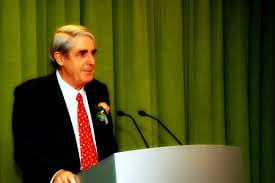
When reading the literature on the history of Southeast Asia, we often take to the depiction of a character who has a position or power in a community context. The depiction of Southeast Asian history is then often associated (intentionally or unintentionally) strictly with economic or political aspects. This makes reading in the literature of Southeast Asian history often plastered with emphasis on facts, dates, names or personalities.
However, we will encounter different things when reading A History of Southeast Asia: Critical Crossroads. This is one of a professor’s works from Australian National University, Anthony Reid. This book at least provides a new offer to the study of the history of Southeast Asia. In this book, the reading of the history of Southeast Asia places more emphasis on the aspects of its context, processes, and historical intersections.
The above is the background of CESASS, AIFIS, and History Department of Faculty of Cultural Studies, UGM cooperates to initiate discussion of SEA-Talks # 6 (5/4) held at Auditorium of Faculty of Cultural Sciences UGM. The discussion themed “Critical Crossroad, Local Genius: Appreciation of Anthony Reid’s, A History of Souhteast Asia” was filled with the exposure of two Southeast Asian history academics, Ronnie Hatley of Washington State University and J. Thomas Lindblad of Leiden University.
Ronnie Hatley mentioned that Anthony Reid’s book is a work of historical study in the paradigm of “Total History”. Total History paradigm itself was born from a historian named Fernand Braudel, frontman of the school of Annales School, France. In the book, the history of Southeast Asia as an area is written with a stronger emphasis on socio-cultural aspects, which is a feature of the paradigm of Total History. Ronnie added that the history of Southeast Asia in Anthony Reid’s book is more on the structure and relations of society, where the role of the parts of society is written more deeply.
Through his work, Anthony Reid offers an aspect of the relationship between the role of women and the environment as a new focus in reading history in Southeast Asia. This was stated by Dr. Lindblad in his presentation. In addition, the book also looks at how people in Southeast Asia have faced outside influences in the past.
